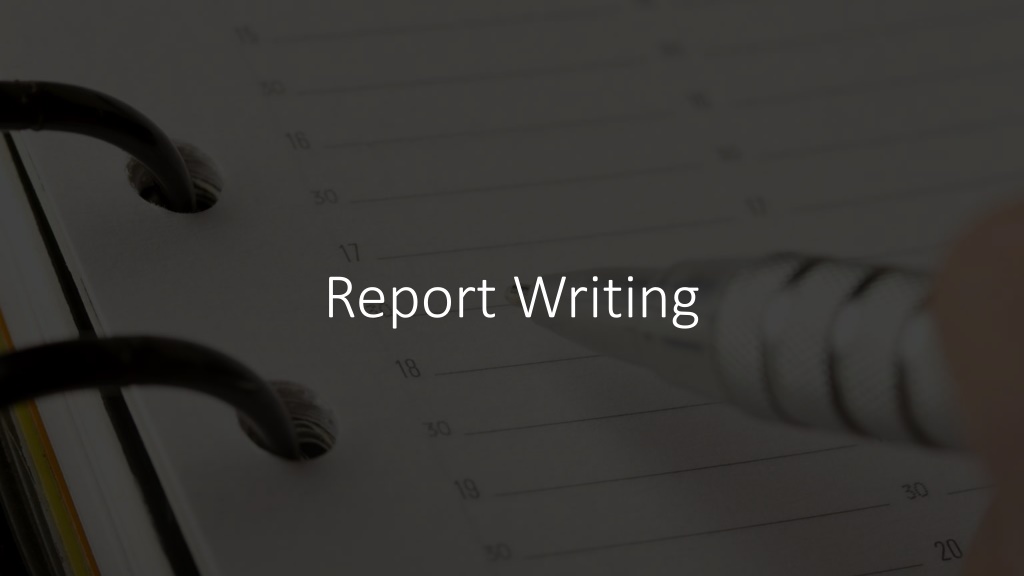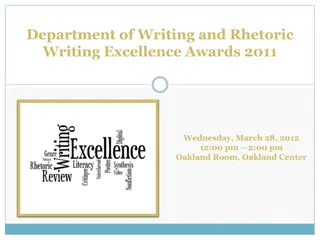Understanding the Types and Significance of Report Writing
Research reporting is crucial for presenting findings clearly. Reports vary in length and purpose, such as short reports for concise information dissemination and long reports for exhaustive documentation. Different types include technical and management reports, each tailored to specific audiences and objectives.
Download Presentation

Please find below an Image/Link to download the presentation.
The content on the website is provided AS IS for your information and personal use only. It may not be sold, licensed, or shared on other websites without obtaining consent from the author. Download presentation by click this link. If you encounter any issues during the download, it is possible that the publisher has removed the file from their server.
E N D
Presentation Transcript
Research Report Research reporting is the oral or written presentation of the findings in such detail and form as to be readily understood and assessed by the society, economy or particularly by the researchers. As earlier said that it is the final stage of the research process, and its purpose is to convey to interested persons the whole result of the study. Definition of Report: According to C. A. Brown, A report is a communication from someone who has information to someone who wants to use that information. According to Goode and Hatt, The preparation of report is the final stage of research, and it s purpose is to convey to the interested persons the whole result of the study, in sufficient detail and so arranged as to enable each reader to comprehend the data and to determine for himself the validity of the conclusions.
Types of Report Report Short Report Long Report Memo or Letter Management Short Technical Technical
Short Report Short report are about 5 pages. Short reports are appropriate when the problem is well defined, is of limited scope, and has a simple and straightforward methodology. Most informational, progress, and interim reports are of this kind. The purpose of this type of report is to distribute information quickly in an easy to use format. Short reports are also produced for clients with small, relatively inexpensive research projects. At the beginning, there should be a brief statement about the authorization for the study. Next come the conclusions and recommendations, followed by the findings that support them. Section headings should be used. Detailed information on the research method would be omitted, Although an overview could appear in an appendix. The letter is a form of short report. Its tone should be informal. The format follow that any good business letter should not exceed a few pages.
Short Report types Short Technical Report: The short technical report covers the same items as long technical report, but in an abbreviated form. The methodology is included as part of the introduction and takes no more than a few paragraphs. Most of the emphasis is placed on the findings and conclusions. Memo/ letter: The memo or letter format covers only the minimum: What the problem is and what the research conclusions are.
Long Report Long reports are exhaustive reports which Include all the steps executed during the research process. Long reports are of 2 types. The technical report or base report and the management report. The choice depends on the audience and the researchers objectives. Technical report: Written for an audience of researchers. Management report: Written for the non technically oriented manager or client. Many projects will require both types of reports.
This report should include full documentation and detail. It is the report that other researchers will want to see because it has the full story of what was done and how it was done. Technical report include sources of data, research procedure, sampling, design, data gathering instrument, index construction and data analysis method. A technical report should also include a full presentation and analysis of significant data. Conclusions and recommendations should be clearly related to the specific findings. There can be brief references to other research theories and techniques. Technical Report
Management report is for the non technical client. The reader has little time to absorb details. Thus, the report sections are in inverted order. After the preparatory and introductory sections, the conclusion with accompanying recommendations are presented. Individual findings are presented next, supporting the conclusions already made. This style of report encourages rapid reading and comprehension of major findings and it prompts understanding of the implications and conclusions. The report tone is journalistic and accurate. The management report should make liberal use of visual displays. Management Report























